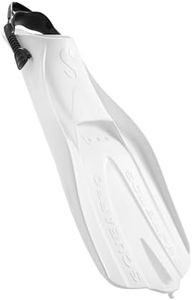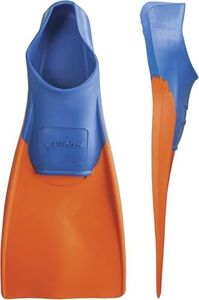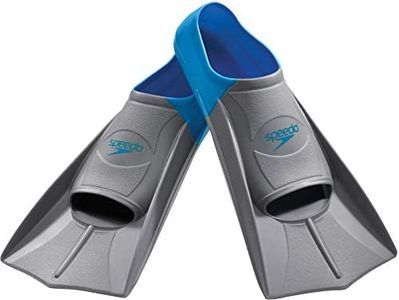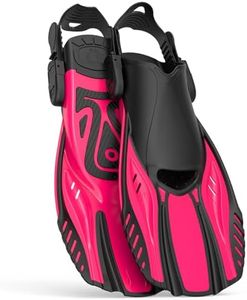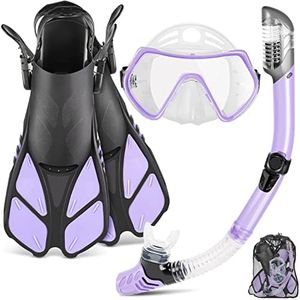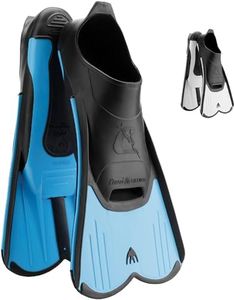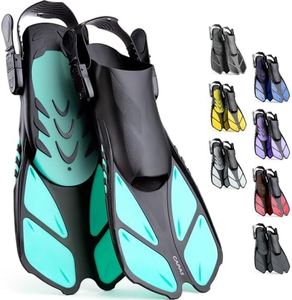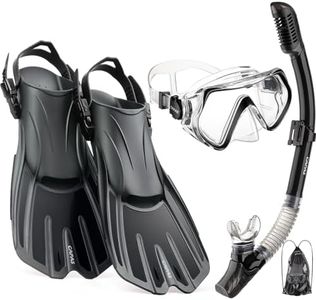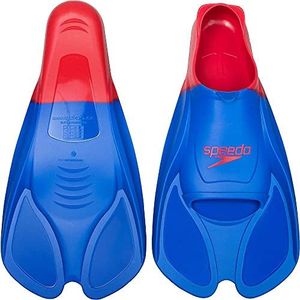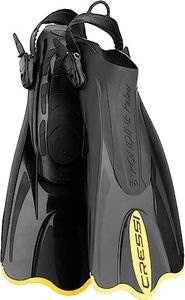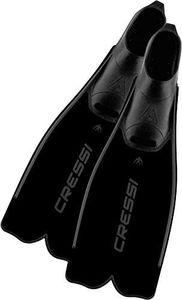We Use CookiesWe use cookies to enhance the security, performance,
functionality and for analytical and promotional activities. By continuing to browse this site you
are agreeing to our privacy policy
10 Best Snorkel Fins
From leading brands and best sellers available on the web.By clicking on a link to a third party's website, log data is shared with that third party.
Buying Guide for the Best Snorkel Fins
Choosing the right snorkel fins can make a huge difference in your comfort and enjoyment while exploring underwater. The right pair will help you move smoothly, avoid fatigue, and suit your experience level and the type of waters you'll be in. Understanding the main features of snorkel fins will help you match what you need with what’s available, leading to a better, safer, and more pleasant snorkeling experience.Fin LengthFin length refers to how long the blades of the fins are. This is important because longer fins usually push you through the water more efficiently but may require more leg strength and effort, whereas shorter fins are easier to control and better for beginners or casual snorkelers. If you plan to snorkel in calm waters and want easy maneuverability, shorter fins may be ideal. If you are more experienced or expect to swim in stronger currents, consider longer fins for better propulsion.
Foot Pocket Type (Full Foot vs. Open Heel)The foot pocket type is how your foot fits into the fin. Full foot fins are worn barefoot and are generally lighter and more comfortable for warm water, while open heel fins are designed to be used with booties and have adjustable straps, making them better for colder water or rocky entries. Think about where you’ll be snorkeling—if it’s warm and you’ll be entering from a beach, full foot is more convenient. For cooler waters or frequent use with dive boots, open heel is preferable.
Blade Flexibility/StiffnessBlade flexibility, or stiffness, describes how easily the fin bends as you kick. Stiffer fins provide more power but require more effort, which can be tiring for beginners. More flexible fins offer easier movement but less thrust. Beginners and casual snorkelers usually benefit from more flexible fins for comfort, while stronger swimmers in challenging conditions might opt for stiffer blades for better power.
Weight and Travel-friendlinessThe weight of the fins affects how easy they are to carry, especially when traveling. Lightweight fins are easier to pack and carry but sometimes lack rigidity. Heavier fins might offer better performance, especially in strong currents, but can be a hassle for travel. If you travel often or pack light, look for compact, lighter fins made for travel. If performance is your main concern and you don’t mind the extra weight, heavier fins may suit you.
Fin Fit and ComfortFit and comfort depend on how the fin hugs your foot and whether it causes chafing or blisters. Ill-fitting fins can lead to sore feet and ruin your snorkeling trip. Most fins come in a range of sizes, and some have adjustable straps for a custom fit. Make sure to try them on with or without booties, depending on how you’ll wear them. Prioritize comfort, as a good fit enhances your experience and reduces the risk of injury.
Venting and Channel FeaturesSome snorkel fins have vents or channels along the blade, designed to improve water flow and increase efficiency. Vented fins allow water to pass through, helping reduce drag and make kicking easier, which is especially helpful for less experienced snorkelers. Channel fins help direct water for smoother propulsion. Look for these features if you want a fin that gives you a little extra help in the water and makes swimming less tiring.

